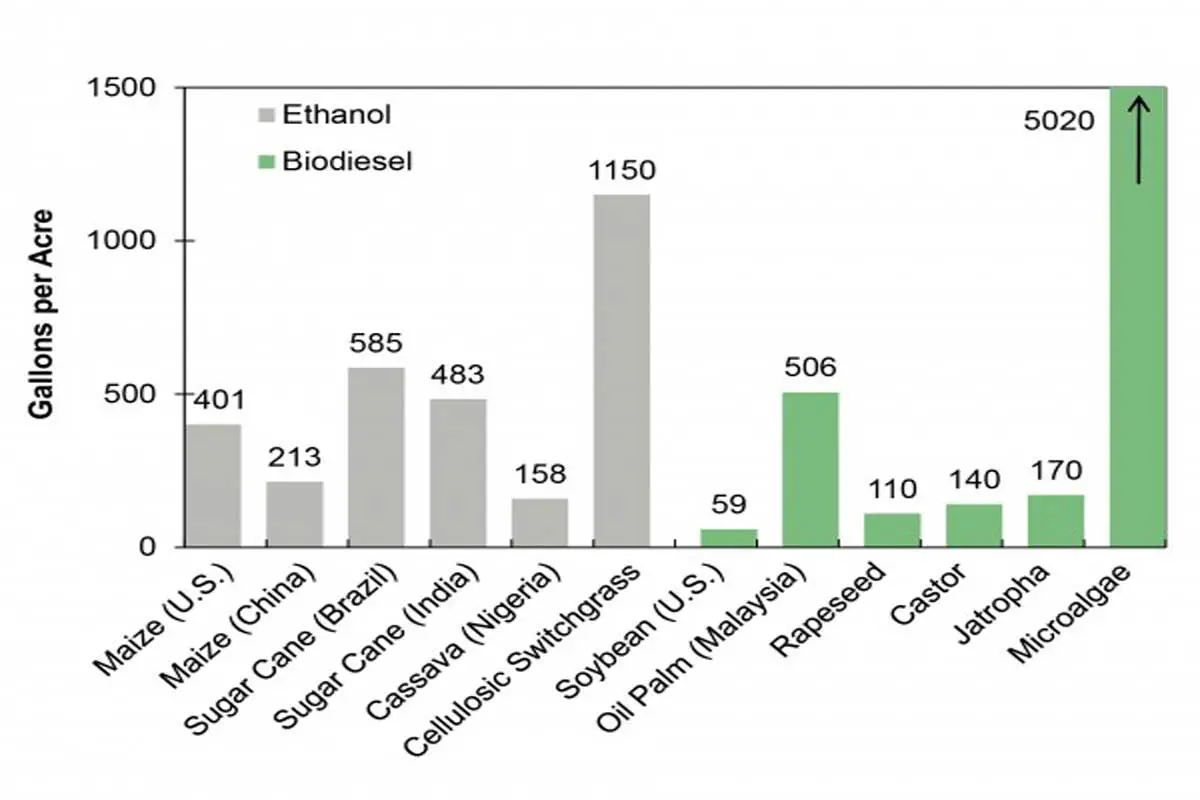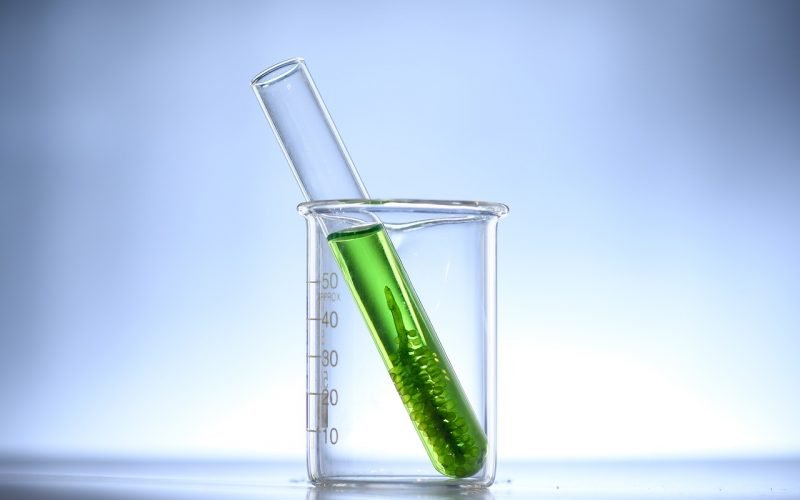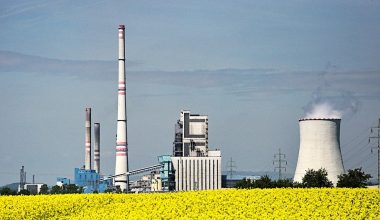Table of Contents Show
What is Algae?
Algae are a diverse group of organisms usually found in aquatic and marine ecosystems such as lakes, ponds, and rivers. These organisms can carry out photosynthesis the same way plants do, thereby providing organisms with oxygen.
Role of Algae in Energy Production
Algae can now help in solving a key energy challenge being faced by the world. They can do this by making our fuel potentially sustainable. This will hopefully revolutionize our entire energy infrastructure and reduce atmospheric pollutants in the process.
Furthermore, Algal biofuels are almost carbon neutral!
Are Algae Ideal for making Biofuel?
Some species of algae contain a large amount of oil within their cells. This oil is sufficient enough that algae can be used to make biodiesel and eventually meet a chunk of the world’s demand for petro-diesel.
Oil is produced from other sources such as corn, palm, or soybeans, but the amount of oil being produced by algae exceeds all of them in terms of oil/acre.
For instance, one acre on which algae is grown can be able to produce up to 10,000 gallons of fuel/acre every year compared to the likes of soybeans producing only 70 gallons of fuel/ acre each year.

Algae can transform a good proportion of the sun’s light into valuable fuel thereby providing a sustainable solution to a large share of our already existing fossil fuel worries.
By carrying out photosynthesis, algae help in the removal of carbon dioxide, as it is one of the two major reactants in the process.
This helps to reduce the greenhouse effect caused by carbon emissions, thus helping to reduce climate change and global warming.
Algae are a carbon neutral source of fuel as well, meaning that the amount of carbon being trapped by algae to carry out photosynthesis is equal to the number of carbon emissions produced by algae-based fuels.
Algae can be grown in different types of soils, and climate that may be unsuitable for the production of other agricultural crops. The biodiesel that can be made from algae is useful in helping to power cars, trucks, planes, and other vehicles which run on petroleum or diesel.
How are Algae converted into biofuel (Biodiesel)?
- Outdoor, artificial, man-made ponds are used to cultivate a new batch of algae crops every few weeks.
- The oil that is found in the tiny cells of algae is then extracted after breaking down the cellular structure of the algae. This is done through the process of “sonification” which uses solvents and sound waves to break down the cell structure of algae.
- The extracted oil from algae is sent to be refined.
- After the oil is refined, it requires further processing for which it is then sent to a bio-refinery. The refining can be carried out in traditional oil refineries in the future.
Algae farms can potentially be built next to power plants that use fossil fuels. This way algae can make use of carbon dioxide waste produced from these power plants. Reactants can be provided to the algae in the ponds to further carry out photosynthesis and reduce carbon emissions emitted from fossil fuel power plants in the process.
Scientists are carrying out tests on different strains of algae to determine which strain is best-suited for producing fuel so that efficient algae farming can be carried out. There are estimated to be about 100,000 strains of algae on the planet.
Different strains of algae grow in different types of soil, water quality, and environment. It is essential to know which species of algae can grow in which type of conditions to get the best out of the crop strain.
Where can we see algae biodiesel being practical?
Algae biodiesel is a great solution to the long list of new ideas and steps being taking to ensure a path of clean energy future, it is not a miracle which can overnight fix all of our energy issues.
Biodiesel like other new clean energy resources cannot be solely relied upon as the primary source of energy. Biodiesel must be used in coherence with our forms of a renewable energy resource so that we may have various options in our disposable all working holistically in chartering towards a clean energy future.
For instance, solar panels are an ideal way forward for providing electricity to homes and other buildings, but they can’t work in powering large heavy trucks or aircraft. Electric cars can work on batteries but large aircraft can’t carry the heavy load.
For heavy trucks, airplanes, and other various forms of vehicles algae biodiesel is a more ideal substitute than petroleum fuels.
Why is it taking so long for algae biodiesel being available in markets?
The issue concerning the implementation and integration of algae biodiesel into the market is due to the difficulty in finding a solution of harvesting and extracting oil efficiently from algae on a large scale.
The oil in the cells of the algae is stored between the cell wall and cell membrane of the algae making it difficult for the extraction of oil without destroying the algae cell itself.
However, wide-scale research is being carried out to find a solution to this problem so that large scale harvesting and production of algae biodiesel can commence in the next few years.
The Future of biodiesel for transport

Biodiesel is a potentially viable option to be used in vehicles due to its carbon neutral attribute, and being a renewable energy resource.
As the price of petroleum products are rising day by day across the world along with an inverse decline in the supplies available, biodiesel seems to be looking like a more attractive alternative to consumers and manufacturers.
Algal biofuel seems to be a much more lucrative investment as biodiesel being produced from cooking oil, oil crops, and animal’s fat is very minimal and cannot be sufficient to meet the pre-existing demands of transport fuels.
Thus, we can surely expect a future where more and more cars will be driving on algae biodiesel which will not only give better mileage but will be more environment-friendly and sustainable. This clean fuel from biodiesel will help to reduce carbon emissions produced from cars, thereby helping to mitigate the impact of global warming and climate change.




